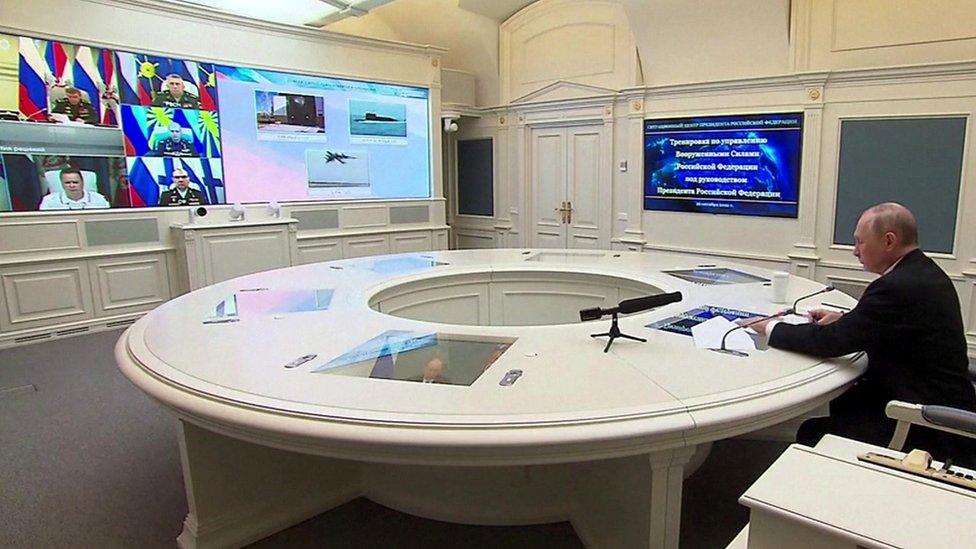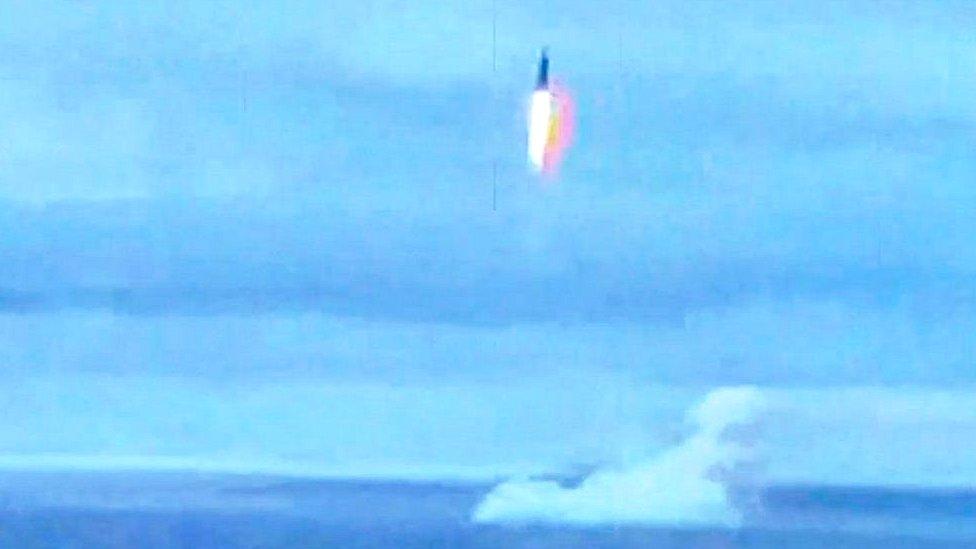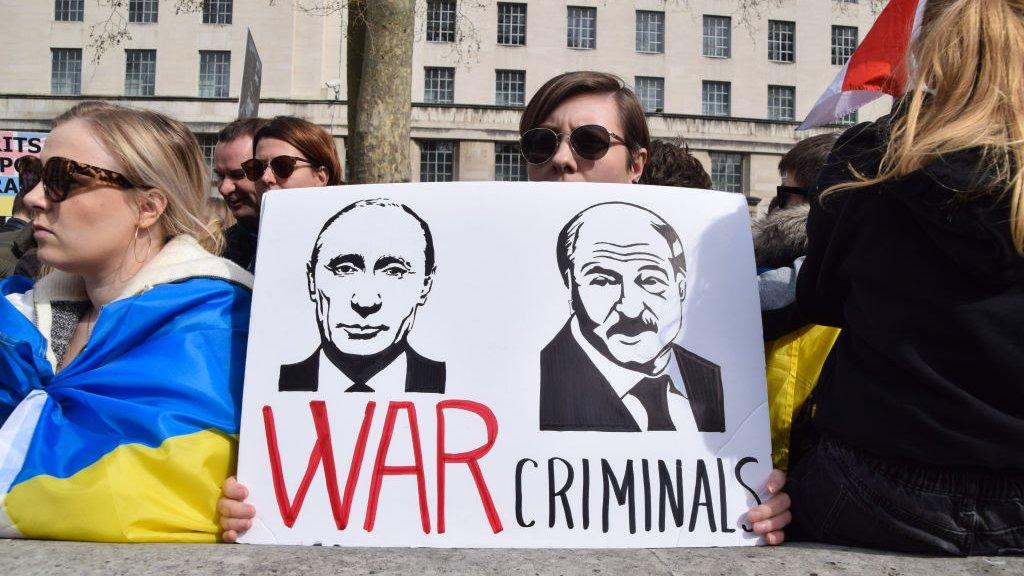Putin watches first Russian nuclear drill since invasion of Ukraine
- Published
- comments

President Putin watched the nuclear drills via video link
Vladimir Putin has overseen annual exercises by Russia's strategic nuclear forces at a time of heightened tensions with the West over his eight-month-long war in Ukraine.
Ballistic and cruise missiles were launched from the Arctic to Russia's Far East, the Kremlin said.
The US was told about the drill under the terms of the New Start arms treaty.
The launches took place as Russia makes unsubstantiated claims that Ukraine was plotting to use a "dirty bomb".
A "dirty bomb" is an explosive device mixed with radioactive material and the Russian allegations have been widely rejected by Western countries as false.
Kyiv warned the claims indicate Moscow itself could be preparing such an attack.
The last Russian nuclear drill took place five days before it invaded Ukraine.
Ahead of the latest exercise, military officials in Washington pointed out that, in notifying the US, the Russians were complying with arms control obligations.
Nato is also staging its own nuclear exercises, dubbed Steadfast Noon, in north-western Europe. The Western defensive alliance said training flights involving 14 countries were taking place , externaluntil Sunday over Belgium, the UK and the North Sea.
Russia's exercises were being held against a backdrop of a flagging campaign in southern and eastern Ukraine.
Moscow has sent troops into the key southern city of Kherson to help defend it. Russia took Kherson in the early days of the war, but recently it has come under pressure as Ukrainian troops advance.
Defence Minister Sergei Shoigu was seen on Russian TV saying that the aim of the drill was for military command and control to practise carrying out "a massive nuclear strike by the strategic nuclear forces in retaliation for the enemy's nuclear strike".
A Yars inter-continental ballistic missile was launched from Plesetsk cosmodrome, some 800km (500 miles) north of Moscow, and a Sineva ballistic missile was fired from the Barents Sea to the remote Kura test site in Kamchatka province in Russia's Far East, the Kremlin said.

One of the two missiles was launched from a nuclear-powered submarine in the Barents Sea
All missiles reached their targets, it added.
President Putin was shown on Russian TV watching a video feed of the launch. Footage was also broadcast of remarks he gave via videolink to a conference of regional intelligence services in which he doubled down on his accusations of a Ukrainian dirty bomb plot.
He also repeated other baseless allegations made by Russia in recent months against Ukraine, including that it had been turned by the US into a "testing ground for military biological experiments".
Ukrainian Defence Minister Oleksiy Reznikov said on Wednesday that "my personal opinion is that Putin won't use nukes". Separately, he told US TV that Ukraine's counter-offensive in the south had been hampered by rainy weather.
In an address to the nation in September, Mr Putin said his country had "various weapons of destruction" and would "use all the means available to us", adding: "I'm not bluffing."
Following the remarks, the EU's foreign policy chief, Josep Borrell, told the BBC that "it's a dangerous moment [in the war] because the Russian army has been pushed into a corner, and Putin's reaction - threatening using nuclear arms - it's very bad".

Related topics
- Published26 October 2022

- Published26 October 2022
